
Other Publications

StEP actively comments and contributes to reports, draft legislations and relevant documents published by other organisations. Further StEP is happy to promote publications prepared by its members available to a broader public.

Revolutionizing E-Waste Management: The Potential of Blockchain Technology
September 2023
Since its 2008 inception, Blockchain has rapidly evolved, challenging norms in finance, society, and entrepreneurship. It's a tamper-proof distributed ledger system with cryptographic security, enabling cryptocurrencies and bottom-up governance. Blockchain can bring innovation, empower users, and apply to the e-waste industry. E-waste management entails global material flow, necessitating a transparent, reliable, tamper-proof system for stakeholders. Blockchain replaces human trust with secure technological trust in supply chain management, enhancing visibility and materiality assessment. It integrates with IoT for real-time data collection, minimizes procedural complexity, verifies documents, and ensures compliance. Blockchain's tokenomics fosters social inclusion, promoting e-waste value, recycling, and community engagement. It has the potential to create economic value, standardize the industry, and requires proper regulatory enforcement for universal industry transformation.

Unlocking the potential of Industry 4.0 to reduce the environmental impact of production
In the report "Unlocking the Potential of Industry 4.0 to Reduce the Environmental Impact of Production" authored by Evelin Dils, Industry 4.0's role in environmental impact reduction through circular economy integration is explored. Emphasizing the significance of Industry 4.0 data in enhancing sustainability, the study identifies enabling factors and barriers across systemic, micro, and policy levels. While recognizing limitations like data scarcity and a lack of social dimension exploration, it underscores digitalization's potential in advancing the circular economy and sustainability. Urging immediate integration, the report stresses ongoing monitoring and research in this evolving landscape.
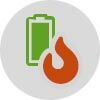
"Tackling fires caused by lithium batteries in e-waste" - A new report published by the WEEE Forum
July 2021
More and more electrical and electronic products in everyday life contain batteries, making life more convenient and pleasant. However, those same batteries, when damaged, also increasingly cause fires.
The new report authored by a consortium composed of the WEEE Forum, EuRIC, EUCOBAT, EERA, MWE and the WEEELABEX Organisation compiles good practices addressed to all actors in the value chain and covering all phases of products’ lifecycle.
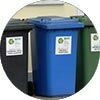
"Analysis of Extended Producer Responsibility Schemes" - published by adelphi
June 2021
In this new report adelphi assesses the performance of six selected schemes in European and EU countries with a focus on WEEE, waste packaging and waste batteries. It considers nine environmental, economic, and technical key performance indicators, such as collection and recycling rates, costs for producers, or stakeholder satisfaction.

Processing of WEEE Plastics: A Practical Handbook
English version | Spanish version | Albanian version
December 2019
Valorizing the plastic fraction from WEEE is often challenging because different plastics need to be sorted by type. In addition, plastics containing hazardous additives should be removed and individual markets have to be identified. Within this document practical information on how to recognize, process and market different WEEE plastics is provided. It is specially oriented towards recycling companies in developing and emerging economies, where the potential for investments in advanced technologies is usually very limited.

Future E-Waste Scenarios
September 2019
This joint publication between StEP, UNU, and UNEP IETC makes an attempt to look into the future of the problem in order to initiate policy level discussions on the challenges and opportunities ahead. The paper maps serveral dimensions of the e-waste problem and provides a snapshopt into future challenges. It looks into what can be anticipated in terms of the use of e-products and how the management of e-waste could evolve.
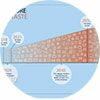
A New Circular Vision for Electronics Time for a Global Reboot
January 2019
Seven UN entities have published this report together, supported by the World Economic Forum, and the World Business Council for Sustainable Development (WBCSD) to call for an overhaul of the current electronics system, with the aim of supporting international efforts to address e-waste challenges. The report calls for a systematic collaboration with major brands, small and medium-sized enterprises (SMEs), academia, trade unions, civil society and associations in a deliberative process to reorient the system and reduce the waste of resources each year with a value greater than the GDP of most countries.The report calls for a new vision for electronics based on the circular economy and the need for collaboration with major brands, small and medium-sized enterprises (SMEs), academia, trade unions, civil society and associations in a deliberative process to change the system. The report points to the importance of new technologies; although e-waste is growing, technologies from Internet of things to cloud computing show a huge potential and could lead to “dematerialization” and better product tracking, take-back and recycling.

Paraguay: Recycling of Electronics
December 2018
The study published in Dec 2018, was the result of the collaboration between the Faculty of science and Technology from the Catholic University of Asunción and the Environmental Management for Sustainable Development Waste of Asuncion. Its main aim is to provide an overview of the dynamics of the current E-waste management in Paraguay and encourages the design of regulations focused on its responsible management.
Language of the study is Spanish.
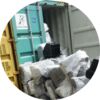
Transboundary movements of used and waste electronic and electrical equipment
Transboundary movements of used and waste electronic and electrical equipment: Estimates from the European Union using trade statistics.
European Union (EU‐28) exports of second-hand, or waste refrigerators, freezers, laptops, desktop computers, televisions and monitors and flat panel displays were analyzed using trade statistics from the EU COMEXT database.
Based on the findings of this analysis, the amount of exported used electronic and electric equipment (EEE) and/or the waste thereof (e‐waste) from the investigated products doubled from 5 kt in 2008 to 10 kt in 2013.

StEP Comments Ghana E‐Waste Bill
15 February 2012
This document examines December 2011 draft bill with reference to among others the findings of StEP work and the individual experience of StEP members and other background research conducted.

Quantitative Characterization of Domestic and Transboundary Flows of Used Electronics
December 2013
The study details the results from a comprehensive effort to calculate generation and collection quantities for whole units (i.e., not disassembled product or material streams) of used electronics in the United States, along with transboundary flows from the United States for a range of products including: TVs, mobile phones, computers and monitors.

Solving the e-waste problem: An interdisciplinary compilation of international e-waste research
This edited volume provides a forum for young scholars to present their research and contribute to the international debate of challenges and solutions for a global e-waste management. The book contains research that was presented at the NVMP-StEP E-waste Summer School Series 2009/2010.
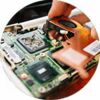
Recycling – from E-waste to resources
July 2009 Throughout this study the focus lies on a consistent set of different types of metals (ferrous and non-ferrous metals) such as aluminium (Al), copper (Cu), palladium (Pd) and gold (Au). Toxic and hazardous elements are present in e-waste, which are partially drivers for the implementation of sound collection and treatment processes. Therefore, in the discussion of recycling technologies, the proper handling and treatment of such harmful elements to prevent environmental or health impact is included. Furthermore, the use and generation of toxic/hazardous substances during e-waste processing (for example, a mercury-gold amalgam or combined dioxins from inappropriate incineration) is critically evaluated with respect to the sustainability criteria for innovative technologies.